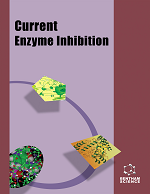
Full text loading...

Alzheimer’s disease (AD) is a debilitating neurodegenerative disorder marked by progressive memory loss and cognitive decline. Oxidative stress and cholinergic dysfunction are central to its pathology. Natural products with antioxidant and cholinesterase-inhibitory activities are gaining attention as potential therapeutic agents. This study explores the neuroprotective potential of Oroxylum indicum seed extract.
Methanolic extraction of Oroxylum indicum seeds was followed by phytochemical screening. Bioactive compounds were isolated via column chromatography and characterized using FTIR, NMR, and mass spectrometry. Antioxidant potential was assessed through DPPH, nitric oxide (NO), and hydroxyl radical scavenging assays. In vitro acetylcholinesterase (AChE) and butyrylcholinesterase (BChE) inhibition assays were conducted, and molecular docking was performed to evaluate binding affinities.
Baicalein and chrysin were identified as major constituents. Both compounds showed potent antioxidant activity: baicalein (IC50 = 49.79 ± 0.033 µg/mL for DPPH, 30.48 ± 0.092 µg/mL for NO, and 48.56 ± 0.10 µg/mL for •OH) and chrysin (IC50 = 66.24 ± 0.032, 38.73 ± 0.030, and 52.18 ± 0.12 µg/mL, respectively). They also exhibited strong enzyme inhibition: baicalein (AChE: 40.73 µg/mL, BChE: 35.76 µg/mL) and chrysin (AChE: 52.74 µg/mL, BChE: 31.56 µg/mL). Docking studies supported these findings, showing strong binding affinities to the active sites of AChE and BChE.
The strong free radical scavenging and cholinesterase-inhibitory effects of baicalein and chrysin highlight their potential to mitigate oxidative stress and cholinergic dysfunction in AD.
Oroxylum indicum seed-derived baicalein and chrysin exhibit promising neuroprotective properties and represent potential candidates for the development of AD therapeutics.

Article metrics loading...

Full text loading...
References


Data & Media loading...